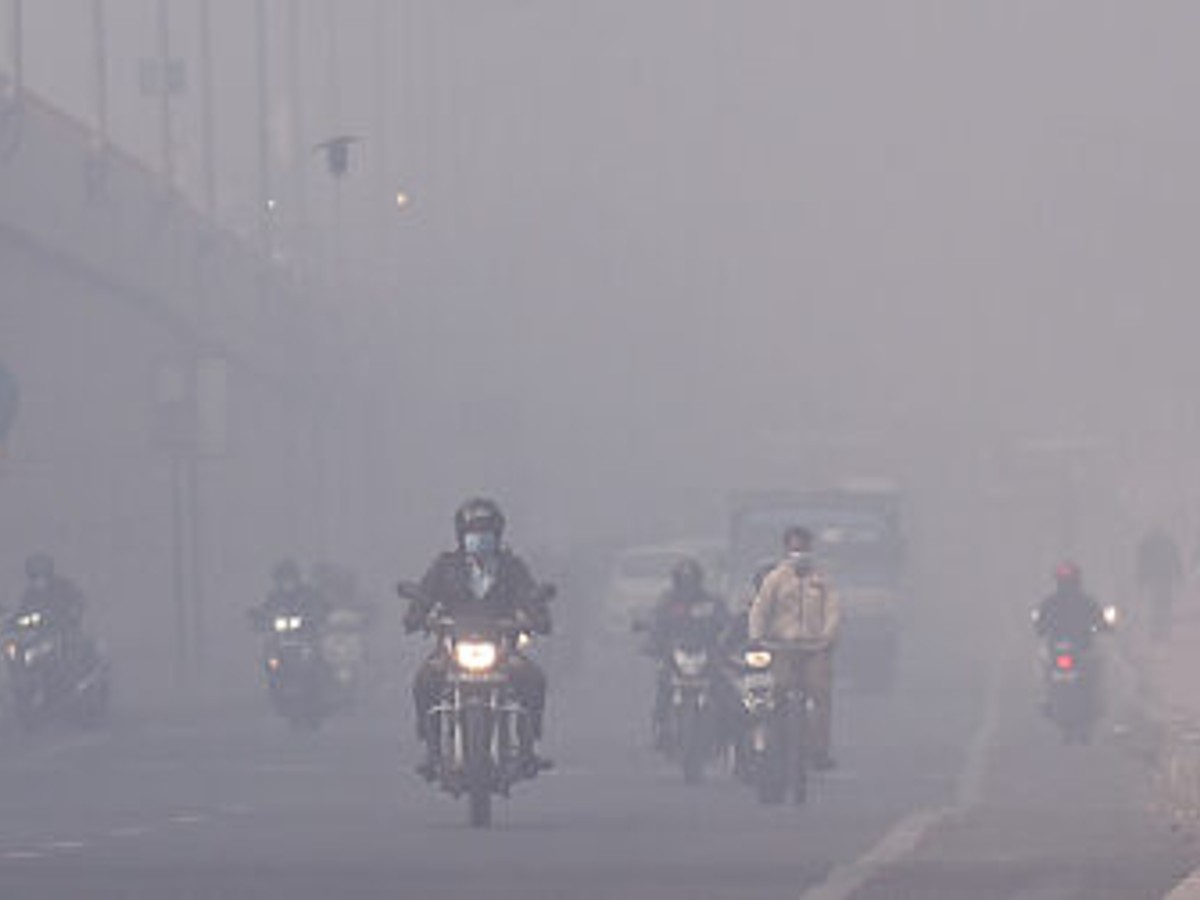
Delhi grappled with fluctuating air quality levels between the very poor and severe categories on Thursday, attributed to unfavourable meteorological conditions impeding the dispersion of pollutants.
Recent research collaboration between the Delhi government and IIT-Kanpur revealed that vehicular emissions accounted for about 38 percent of the capital’s air pollution on Wednesday, projected to escalate to 40 percent by Thursday.
The secondary contributors to Delhi’s polluted air are secondary inorganic aerosols—particles like sulphate and nitrate formed due to the interplay of gases and particulate matter from sources such as power plants, refineries, and vehicles. This factor accounts for 30 to 35 percent of the city’s air pollution in recent days.
An official from the India Meteorological Department (IMD) said that calm winds and low temperatures are enabling the accumulation of pollutants, with no anticipated relief in the upcoming days.
As of 9 am on Thursday, Delhi’s Air Quality Index (AQI) stood at 393. The 24-hour average AQI, recorded at 4 pm daily, was 401 on Wednesday, 397 on Tuesday, 358 on Monday, and 218 on Sunday, while Thursday recorded 437 last week.
Neighbouring areas like Ghaziabad (358), Gurugram (325), Greater Noida (343), Noida (337), and Faridabad (409) also reported very poor to severe air quality.
The AQI scale categorizes readings: zero to 50 as good, 51 to 100 as satisfactory, 101 to 200 as moderate, 201 to 300 as poor, 301 to 400 as very poor, 401 to 450 as severe, and above 450 as severe plus.
Despite stringent measures by the state government, such as a construction ban and restricting diesel trucks’ entry into the city to control pollution, Delhi’s air quality deteriorated.
According to IQAir, a Swiss air quality monitoring company, Delhi was the most polluted city globally on Wednesday, followed by Lahore and Mumbai.
A system devised by Pune-based Indian Institute of Tropical Meteorology revealed that stubble burning contributed to 23 percent of the capital’s air pollution on Wednesday and reduced to 11 percent on Thursday, expected to decrease further to four percent on Friday.
The Commission for Air Quality Management (CAQM) affirmed continuing stringent measures, including construction bans and curbing polluting trucks’ entry, under the central government’s air pollution control plan known as the Graded Response Action Plan (GRAP).
Delhi’s Environment Minister Gopal Rai hinted at the possibility of implementing the odd-even car rationing scheme if the AQI surpasses the 400 mark, although its implementation was postponed last week due to improved air quality resulting from rain.
Medical experts cautioned that breathing Delhi’s polluted air is akin to the harmful effects of smoking approximately 10 cigarettes a day. Prolonged exposure to high pollution levels can exacerbate respiratory ailments like asthma, bronchitis, chronic obstructive pulmonary disease (COPD), and significantly elevate cardiovascular disease risks.
Combination of unfavourable meteorological conditions, vehicular emissions, paddy-straw burning, firecrackers, and other local sources contribute to hazardous air quality in Delhi-NCR during winters.
As per a Delhi Pollution Control Committee (DPCC) analysis, peak pollution occurs from November 1 to 15 when stubble-burning incidents in Punjab and Haryana rise.
On Wednesday, Punjab reported 2,544 new stubble-burning incidents, totaling 30,661 fires since September 15.
An August report by the Energy Policy Institute at the University of Chicago (EPIC) suggested that air pollution is reducing lives by nearly 12 years in Delhi. (With inputs from PTI)
Dense fog disrupted operations at Delhi airport on Friday, leading to 79 flight cancellations and…
After past differences, Karan Johar and Kartik Aaryan finally collaborate on Tu Meri Main Tera…
Delhi Fire Service has initiated comprehensive fire safety inspection drive in restaurants, hotels and clubs…
Out of 40 air quality monitoring stations across the city, 14 recorded severe air quality…
Govt, however, acknowledged that air pollution is one of the triggering factors for respiratory ailments…
Rising air pollution levels in the capital, the Delhi government on Thursday undertook a comprehensive…